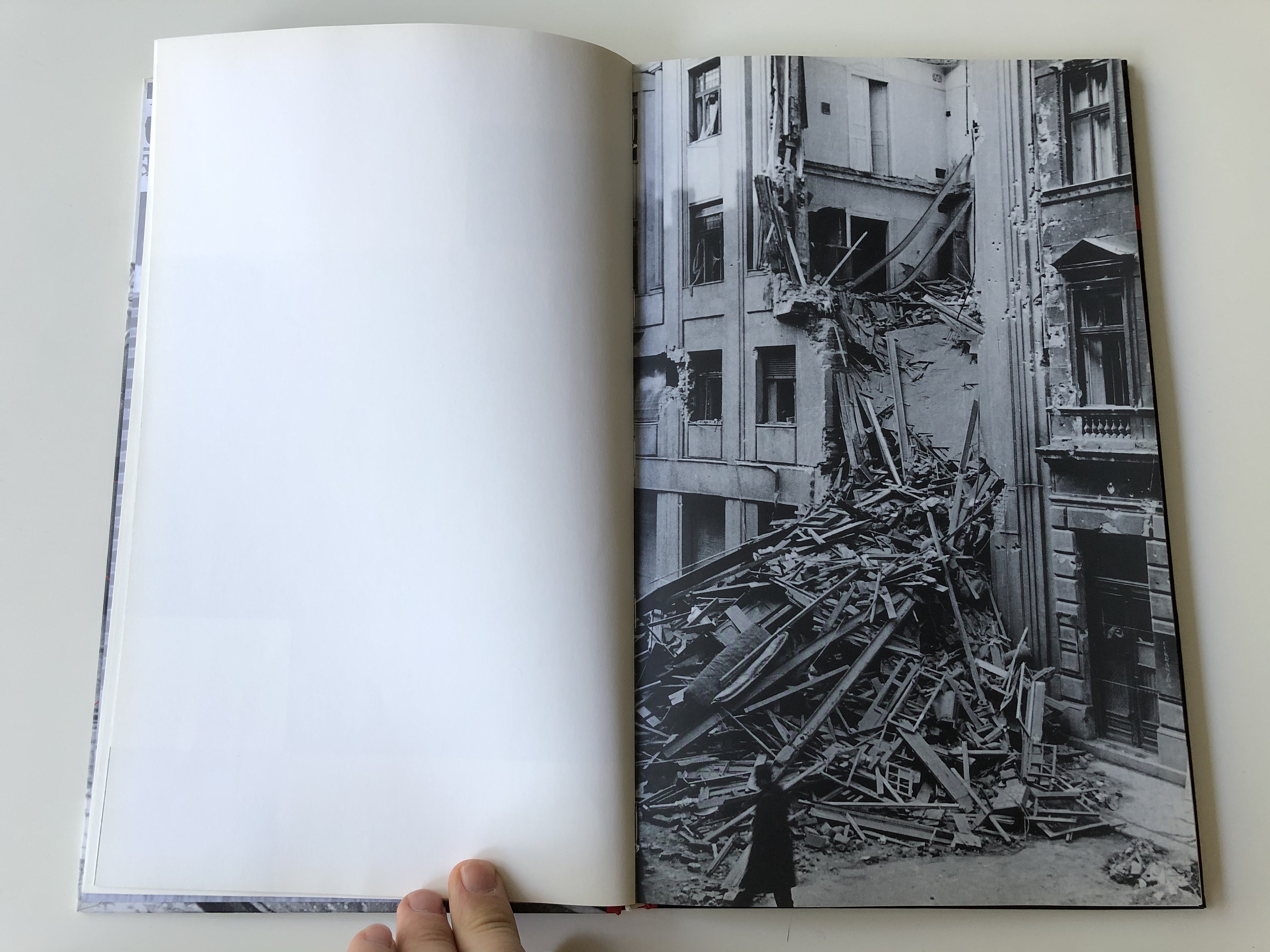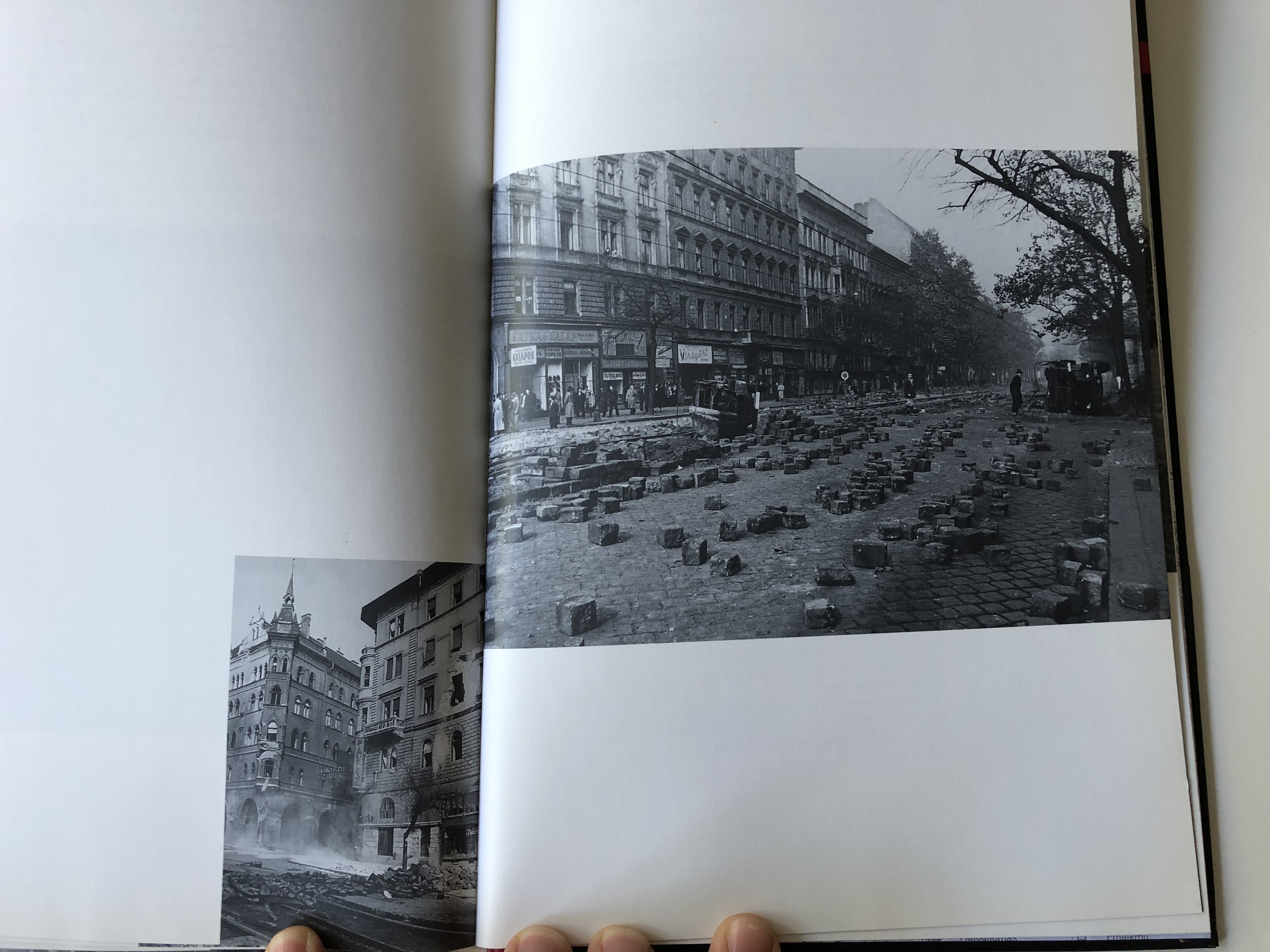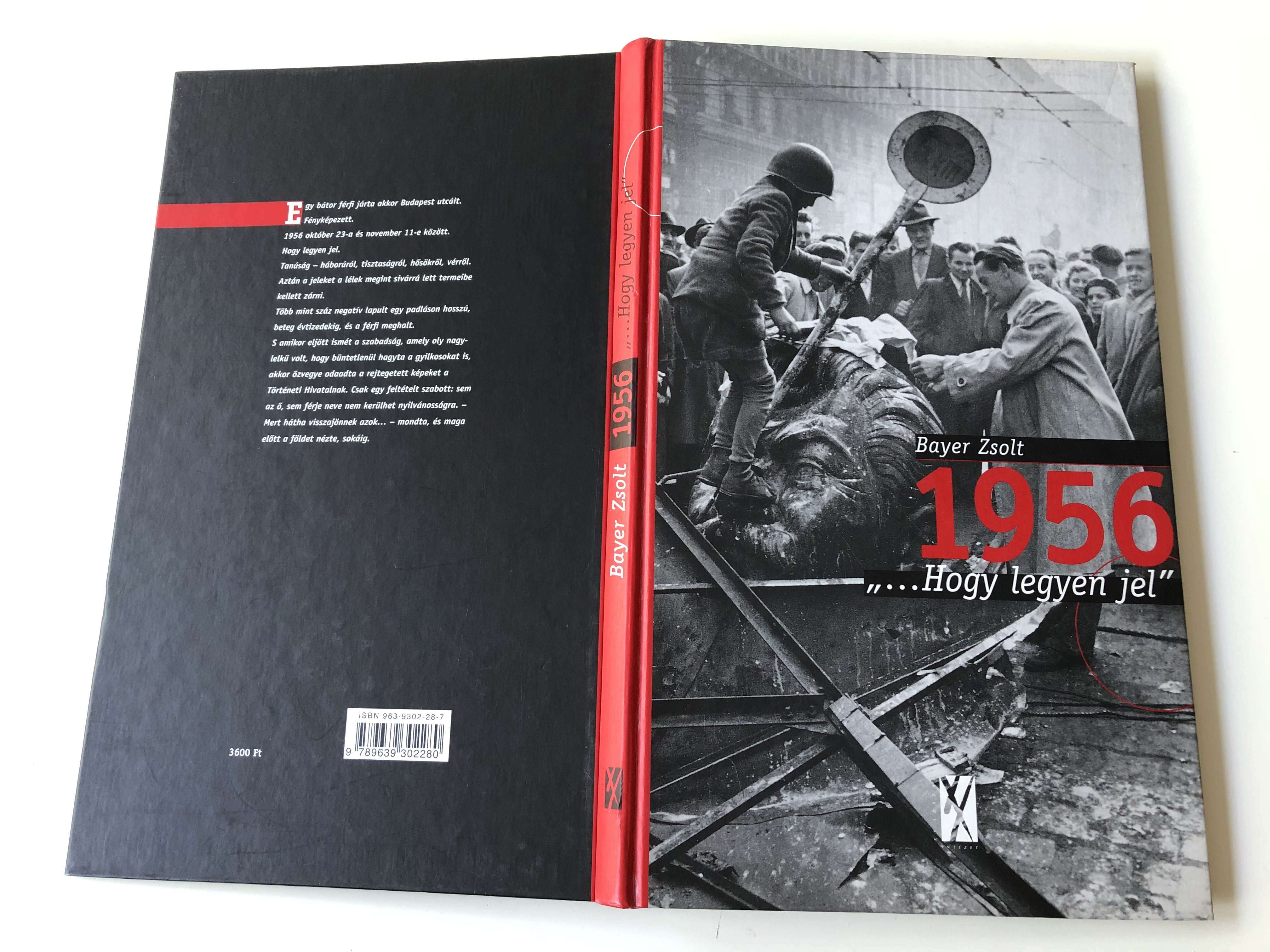Description
1956 "... Hogy legyen jel" by Bayer Zsolt / Kairosz Kiadó 2000 - XX. Század Intézet és Történeti Hivatal / Hungarian Revolution History
Hardcover 2000
ISBN: 9789639302280 / 978-9639302280
ISBN-10: 9639302287
PAGES: 88
PUBLISHER: Kairosz Kiadó
LANGUAGE: HUNGARIAN / MAGYAR
Hungarian Description:
Egy bátor férfi járta akkor Budapest utcáit. Fényképezett.
1956 október 23-a és november 11-e között. Hogy legyen jel.
Tanúság - háborúról, tisztaságról, hősökről, vérről. Aztán a jeleket a lélek megint sivárrá lett termeibe kellett zárni.
Több mint száz negatív lapult egy padláson hosszú, beteg évtizedekig, és a férfi meghalt.
S amikor eljött ismét a szabadság, amely oly nagylelkű volt, hogy büntetlenül hagyta a gyilkosokat is, akkor özvegye odaadta a rejtegetett képeket a Történeti Hivatalnak. Csak egy feltételt szabott: sem az ő, sem férje neve nem kerülhet nyilvánosságra. - Mert hátha visszajönnek azok...- mondta, és maga előtt a földet nézte, sokáig.
English Summary:
The Hungarian Revolution of 1956 (Hungarian: 1956-os forradalom), or the Hungarian Uprising,[5] was a nationwide revolution against the Hungarian People's Republic and its Soviet-imposed policies, lasting from 23 October until 10 November 1956. Leaderless at the beginning, it was the first major threat to Soviet control since the Red Army drove Nazi Germany from its territory at the End of World War II in Europe.
The revolt began as a student protest, which attracted thousands as they marched through central Budapest to the Hungarian Parliament building, calling out on the streets using a van with loudspeakers. A student delegation, entering the radio building to try to broadcast the students' demands, was detained. When the delegation's release was demanded by the protesters outside, they were fired upon from within the building by the State Security Police, known as the ÁVH (acronym for Államvédelmi Hatóság, literally "State Protection Authority"). Multiple students died and one was wrapped in a flag and held above the crowd. This was the start of the next phase of the revolution. As the news spread, disorder and violence erupted throughout the capital.
The revolt spread quickly and the government collapsed. Thousands organised themselves into militias, battling the ÁVH and Soviet troops. During the revolt there were violent incidents; some local leaders and ÁVH members were lynched or captured, while former political prisoners were released and armed. Radical impromptu workers' councils wrested municipal control from the ruling Hungarian Working People's Party (Hu: Magyar Dolgozók Pártja) and demanded political change.

















































